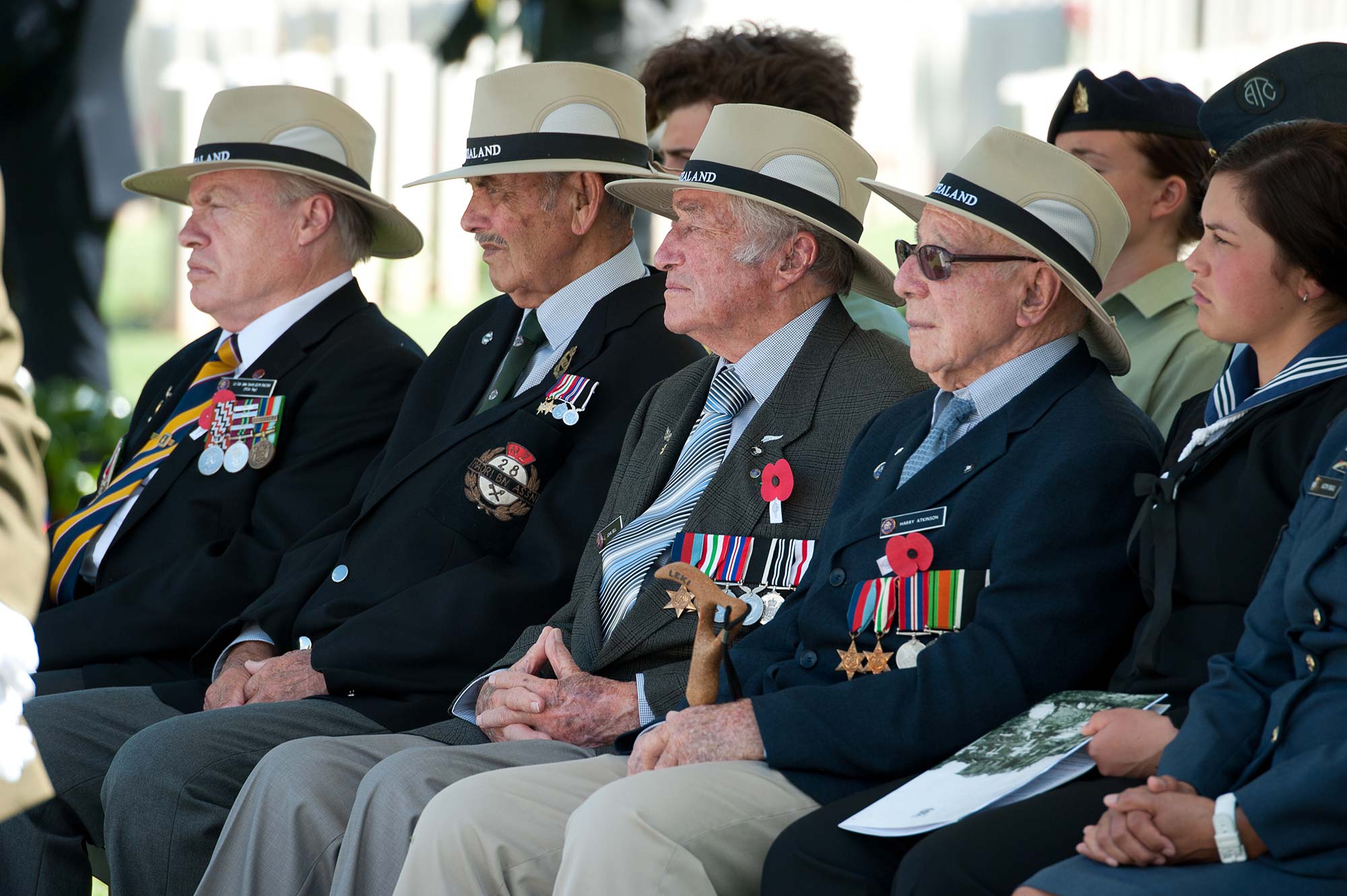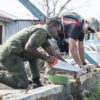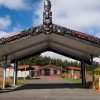By Mr J. Seed
In this article I set out to examine the way NZDF personnel have been recognised with Royal Honours since the creation of the New Zealand Order of Merit in May 1996.
There are anecdotal stories that honours awarded have greatly favoured Commissioned ranks over Non-Commissioned and that the number of awards granted has diminished over time. I wanted to look at the overall picture of Honours awarded to the Army to see if these claims had any validity.
METHODOLOGY
I obtained an online copy of every honours list since The Queens Birthday Honours List of 1996 at the website of the Department of Prime Minister and Cabinet (www.dpmc.govt.nz). This site contains extensive information on the New Zealand Royal Honours system as The Honours Unit, which administers the system, is part of the Department of Prime Minister and Cabinet.
Typically Honours are announced twice a year. There is a list every January titled The New Years Honours and one every June to mark the Sovereign’s official birthday (The Queen’s Birthday Honours). There have also been occasional special lists released at different times to record the awarding of gallantry and bravery awards. While I have noted these gallantry and bravery awards, I did not include them in my overall analysis. These awards are made on an as required basis.
DISCLAIMER
I am not, nor do I profess to be, a statistician or mathematician. In that respect it is entirely possible there have been minor errors made in respect of some of the award numbers shown however, if this is the case, only one or two awards may have been missed and any variation will not be significant in respect of the final analysis.
The data available shows the award made, the rank held by the recipient at the time it was made and the Corps they were serving in at the time (information on which corps the recipient served in, is not shown consistently for all awards from 1996-present).
There is no indication as to whether specific awards were made for operational, or non-operational service and I have not taken this factor into account in my analysis. Some awards, by their very nature (gallantry awards) must be operational and the nature of others could be determined by using the Official Information Act to access all award citations, however, that is a much larger piece of research than I have conducted here. The question of recognition for operational versus non-operational service is one that will have to be addressed in another piece of research.
THE HONOURS SYSTEM
The sovereign is the fount of all honour, all honours flow from the Queen.
In New Zealand, anyone can nominate anyone else for an award. Within the NZDF, Defence Headquarters collates nominations and conveys them to the Honours Unit. Honours recommendations are compiled by the government and submitted for approval to the Sovereign.
Prior to 1996 New Zealanders were eligible to receive the same awards as citizens in the UK and some other Commonwealth countries. While countries like Canada and Australia had created their own honours system, New Zealand continued to make awards of Imperial honours. Various grades of the Order of the British Empire and the Orders of the Bath and Saint Michael and Saint George, had all been awarded to members of the NZDF at different stages.
Imperial Orders, like those named above, are awarded in different grades. A recipient may receive a low grade award initially and over time, assuming ongoing merit, they could be elevated within the order, or for subsequent merit, they may receive an award from a higher ranked order. This meant that there were multiple awards to recognise individuals as they climbed both promotional and meritocratic ladders.
However, all this changed with the creation of a uniquely New Zealand Honours system in 1996. The New Zealand Order of Merit was created in five grades, highest to lowest these are:
- Knight / Dame Grand Companion (GNZM)
- Knight / Dame Companion (KNZM or DNZM)
- Companion (CNZM)
- Officer (ONZM)
- Member (MNZM)
This order joined The Order of New Zealand (ONZ), which was instituted in 1987 and The Queens Service Order (QSO) and The Queens Service Medal (QSM) which were instituted in 1975 as uniquely New Zealand honours, replacing previously awarded Imperial Honours. At the sametime, awards of Imperial Gallantry and Bravery awards were also suspended, but no unique New Zealand awards had, as at that time, been created to fill the gap so some acts of bravery and gallantry by New Zealanders at this time were recognised with the award of the New Zealand Order of Merit.
From mid 1996, the orders within the New Zealand Honours system were ranked thus:
- Order of New Zealand (single grade)
- New Zealand Order of Merit (five grades)
- Queens Service Order (single grade)
- Queens Service Medal(single grade)
The first honours list in which these awards were bestowed was The Queen’s Birthday Honours List of 1996. The QSO and QSM could not be awarded for military service and the ONZ, to date, has never been awarded to recognise military service, meaning that when the awarding of imperial awards ceased NZDF personnel could only have their efforts recognised by award of one of the grades of the New Zealand Order of Merit.
The Order of the British Empire was divided into two categories, civil and military. These categories were signified by the use of different ribbons on the civil and military awards. The New Zealand Order of Merit made no such distinction between military and any other type of service so the ability to recognise service with a uniquely military award had been lost.
In 2007, the Distinguished Service Decoration (DSD) was introduced to specifically “recognise distinguished military service, by regular, territorial and reserve members of the New Zealand Defence Force, including command and leadership and service in an operational environment, or in support of operations.” This addressed a perceived gap in the system in that there had not been a specific award to recognise military achievement.
FINDINGS
In compiling this study, my methodology was deceptively simple – look at each honours list since The Queens Birthday 1996 list (the introduction of the New Zealand Honours system), note the awards made and record who had got what, noting, where possible, the ranks and the Corps.
In the period under review (1996-present), there were 55 lists published, 2 every year and a number of special lists covering bravery and gallantry awards and events like the early East Timor deployments (published in 2000) and the Asian Tsunami (published in 2006).
There were a total of 202 awards bestowed to New Zealand Army personnel in the period under review. This compares to 97 for the RNZAF and 89 for the RNZN. Of that 202, 66 were awarded to non-commissioned personnel and the balance to those holding a commission.
The split by awards is:
- CNZM: 4 (All awarded to senior officers)
- ONZM: 35 (2 awarded to Other Ranks )
- MNZM: 103 (40 awarded to Other Ranks)
- DSD: 60 (20 awarded to Other Ranks)
- TOTAL: 202
The split by corps is:
RNZIR: 49
RNZE: 28
RNZALR: 27
RNZAC: 14
RNZAMC: 12
RNZA: 12
NZIC: 6
RNZSiGs: 4
NZSAS: 4
RNZNC: 3
RNZMP: 2
RNZAEC: 2
RNZDC: 1
NZALS: 1
TOTAL: 165
NOTES ON THE BREAKDOWN OF AWARDS BY CORPS
Not all lists show corps details for all recipients. Those who were Colonels and above at the time of the award did not have corps attributed to them in lists, hence the total number of awards shown, by corps is less than the total of awards made.
Additionally there were a number of awards made to personnel who were only identified by an initial with no rank or corps information provided.
Some awards shown for RNZIR, may be NZSAS awards. Procedures have varied over time whereby some awards to members of the NZSAS were attributed to their original corps.
The split by rank is:
LtGen: 1
Brig: 10
Col: 15
LtCol: 37
Maj: 47
Capt: 14
Lt: 9
2Lt 0
WO1: 23
WO2: 4
SSgt: 11
Sgt: 4
Cpl: 11
LCpl(e): 3
Pte(e): 6
TOTAL: 195
NOTES ON THE BREAKDOWN OF AWARDS BY RANK
Not all lists show rank details for all recipients. A series of awards were made to personnel only identified by their initials with no rank or corps detail provided, hence this table records only 195 awards.
The split by year of award is:
1996: 3
1997: 7
1998: 7
1999: 10
2000: 12
2001: 11
2002: 11
2003: 16
2004: 15
2005: 11
2006: 20
2007: 12
2008: 10
2009: 8
2010: 11
2011: 3
2012: 5
2013: 7
2014: 6
2015: 8
2016: 4
2017: 5
TOTAL – 202
As can be seen from even a cursory glance at the list of awards by year, the years 1999-2008 were golden years in respect of Honours and Awards to New Zealand Army personnel. During this period all three services received a higher number of honours per annum than they currently do.
In addition to the number of awards decreasing, there was also a drop in the level of award made after the introduction of the Distinguished Service Decoration (DSD) in 2007.
The DSD is ranked as a sixth level award while the MNZM is a fifth level award. This means that when the MNZM was the most commonly awarded decoration to members of the NZDF, their achievements were recognised with fifth level awards. Following the introduction of the DSD the MNZM was awarded much more sparingly and NZDF personnel were now primarily recognised with a sixth level award. Thus the service being recognised was deemed to be worthy of recognition at a level below that previously awarded. However this was a double edged sword because the introduction of the DSD solved the problem of NZDF personnel being able to be recognised more than once without having to be simply elevated within the New Zealand Order of Merit.
GALLANTRY AND BRAVERY AWARDS
The New Zealand Gallantry Awards and The New Zealand Bravery Awards were introduced in 1999. The awards replaced Imperial awards for gallantry in military circumstances involving confrontation with an enemy, or on peacekeeping operations and bravery in circumstances not involving conflict with an enemy.
Both sets of awards have four levels, NZ Gallantry Awards and NZ Bravery Awards:
- Victoria Cross for New Zealand (VC)
- New Zealand Gallantry Star (NZGS)
- New Zealand Gallantry Decoration (NZGD)
- New Zealand Gallantry Medal (NZGS)
- New Zealand Cross (NZC)
- New Zealand Bravery Star (NZBS)
- New Zealand Bravery Decoration (NZBD)
- New Zealand Bravery Medal (NZBM)
Perhaps not surprisingly, given the tempo of operations over the last decade, the majority of Gallantry Awards have been made to the Army. The table below shows Gallantry and bravery awards to members of the NZDF:
VC:
1, Army
NZGS:
6, all Army
NZGD:
1, RNZN
9, Army
1, RNZAF
NZGM:
1, RNZN
10, Army
1, RNZAF
NZBM:
2, RNZN
6, Army
5, RNZAF
CONCLUSIONS
There is no one simple reason for why the number of honours to members of the NZDF and the Army have declined. Anecdotal evidence is that the NZ Police have also noted a decline in the number of awards, but do not attribute it to any single factor.
Like the NZDF, the NZ Police have scaled back their peace support operations globally. When on an operational footing, it makes sense that the majority of awards are given to those involved in operations, so it follows that when operations are scaled down, award numbers will follow.
The DSD is now the most commonly awarded honour to members of the NZDF, it is a sixth level award that sits below the MNZM (and ONZ and QSO) in status. This, in itself, takes nothing away from the honour, but it does mean that actions which once were deemed worthy of a level five award are now rewarded with a level six award.
The creation of an honours system within the NZDF was a significant step. Commendations and the creation of the Defence Meritorious Service Medal have enabled the recognition of a wide range of achievements and individuals. This is all managed within the NZDF and has removed the need to go to any external agencies.
The NZ Police have, for many years, had a simple but extremely well used and respected commendation system. This system was enlarged in 2013 with the creation of the New Zealand Police Meritorious Service Medal. While NZ Police personnel are also eligible for, and do receive, Royal Honours, the internal honour system ensures the Police, like the NZDF, are able to honour those who achieve or excel at a level below that required for Royal Honours.
The reality of this situation is that all levels of achievement, by personnel of all corps and all ranks are able to be honoured. The fact that Royal Honours are seemingly harder to get than any others, will ensure that the mana of the awards is respected and preserved






